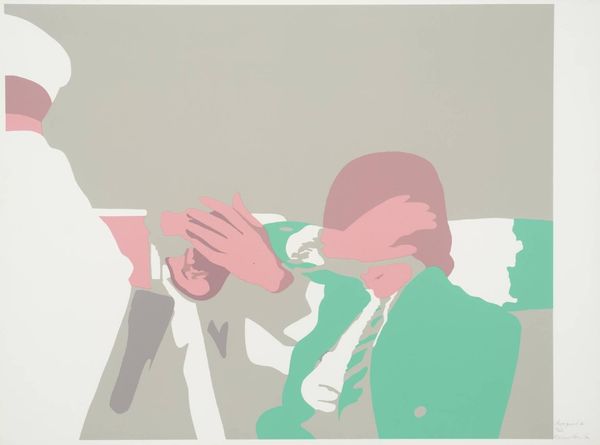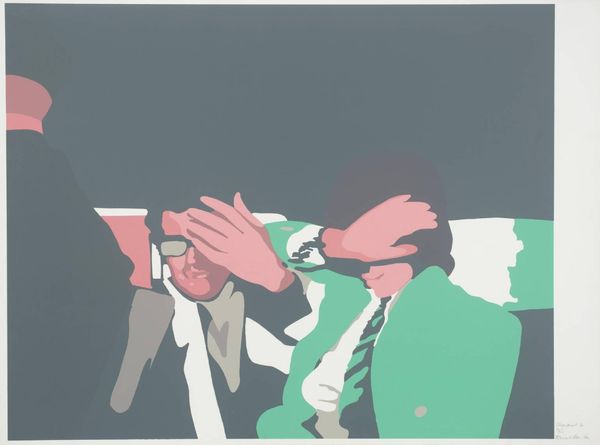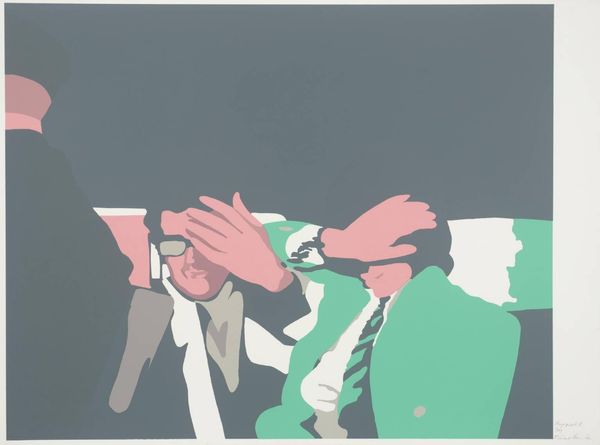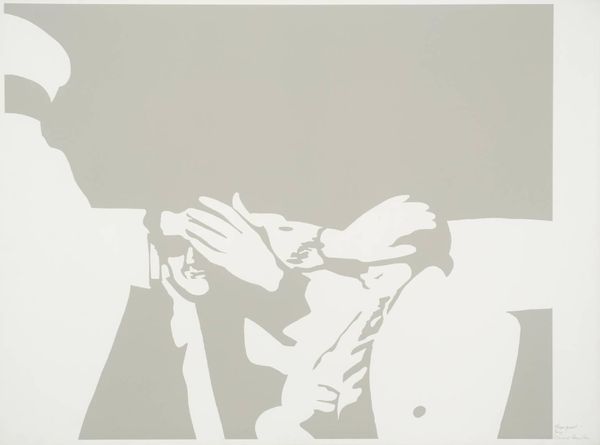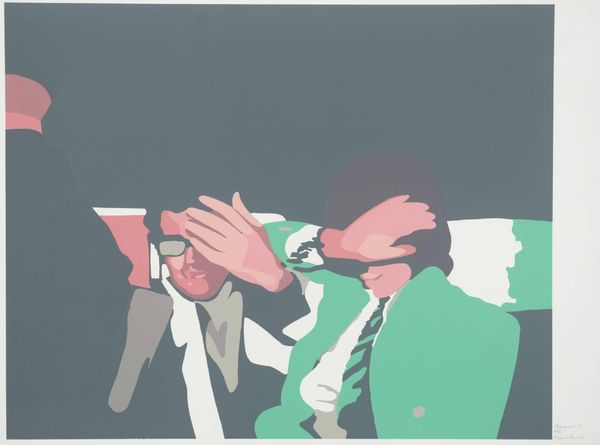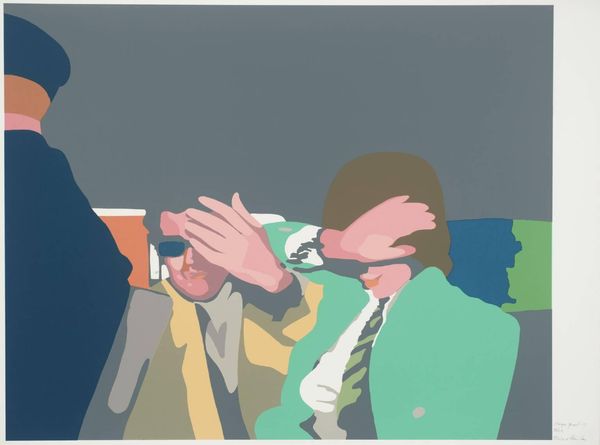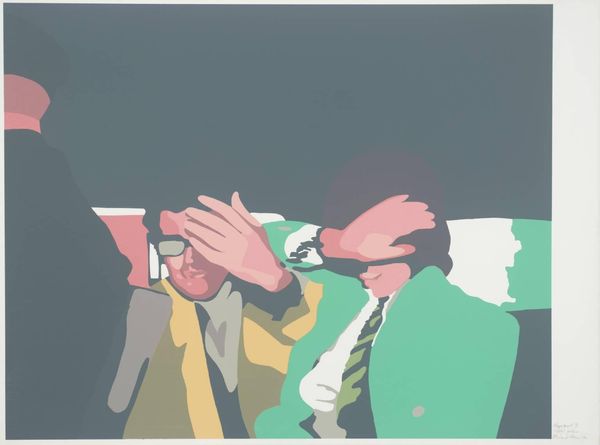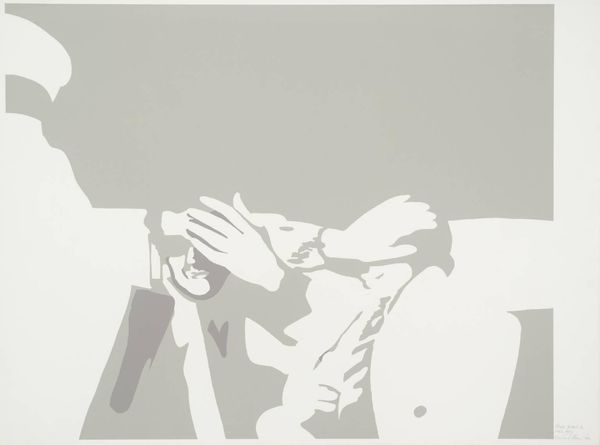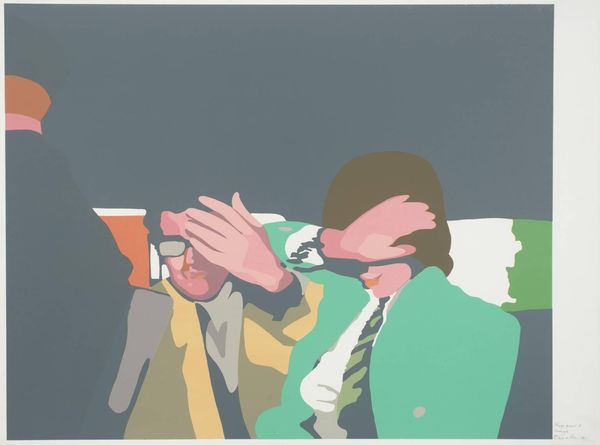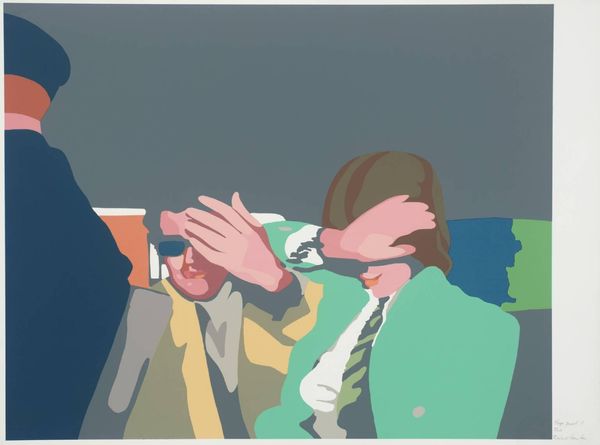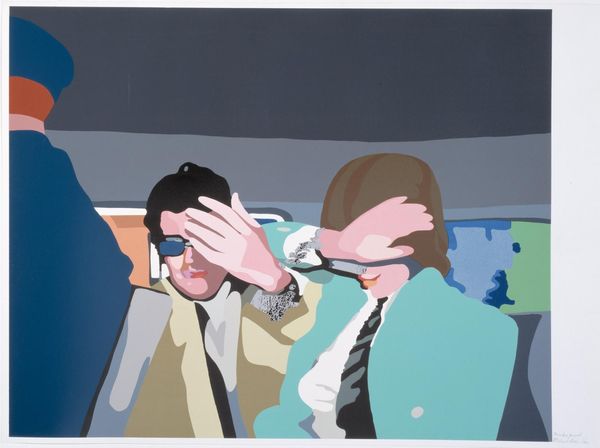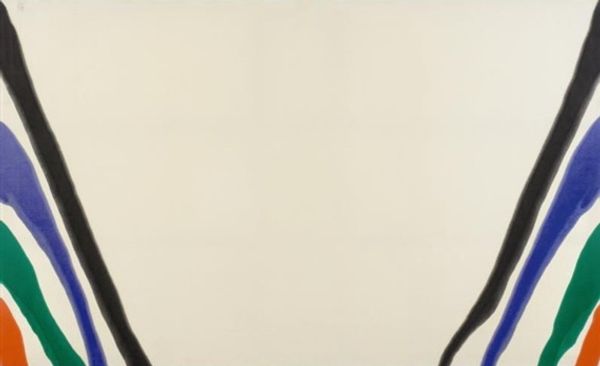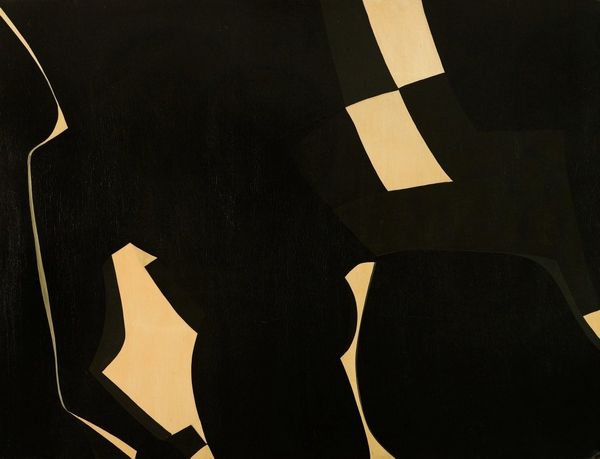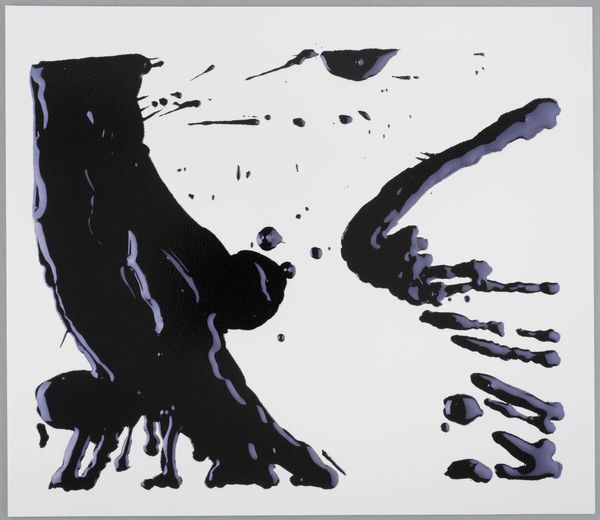
Dimensions: image: 681 x 859 mm
Copyright: © The estate of Richard Hamilton | CC-BY-NC-ND 4.0 DEED, Photo: Tate
Curator: Richard Hamilton's "Stage Proof 3", currently held in the Tate Collections, presents a stark interplay of form and color, wouldn’t you agree? Editor: Indeed. It's quite arresting; the gesture of covering one's eyes is universally understood as an expression of refusal, perhaps of confronting a difficult reality. Curator: Precisely. The use of flat planes of color—that muted grey, bright white, and jarring green—flattens the image, emphasizing the abstract composition over realistic representation. Editor: Note too how that blocking action is directed at a male figure, a recurring figure within consumerist culture: the businessman; the faceless man, blinded by his success. Curator: The simplified forms and limited palette push us to consider the underlying structure of the image itself, its pure visual relationships. Editor: Right, and in doing so, it makes the viewer consider that there is often more to fear from the "acceptable" than from the "taboo". Curator: A compelling dialogue between surface and symbol, I’d say. Editor: Yes, Hamilton offers a powerful visual statement on how readily we deflect from discomforting truths.
Comments
Join the conversation
Join millions of artists and users on Artera today and experience the ultimate creative platform.
tate 8 months ago
⋮
Release – Stage Proofs 1-13 and 16-19 (P02416-32; the series is incomplete) is a group of seventeen prints showing the process of building up colour to make the print Release (P04254). Each proof represents the successive addition of a screen, made from a hand-cut stencil, used to apply a particular colour. The completed print Release combines the seventeen colour screens, each used once, and the photographic black screen which has the texture of an imprint on canvas as well as the photographic halftone, used twice.
